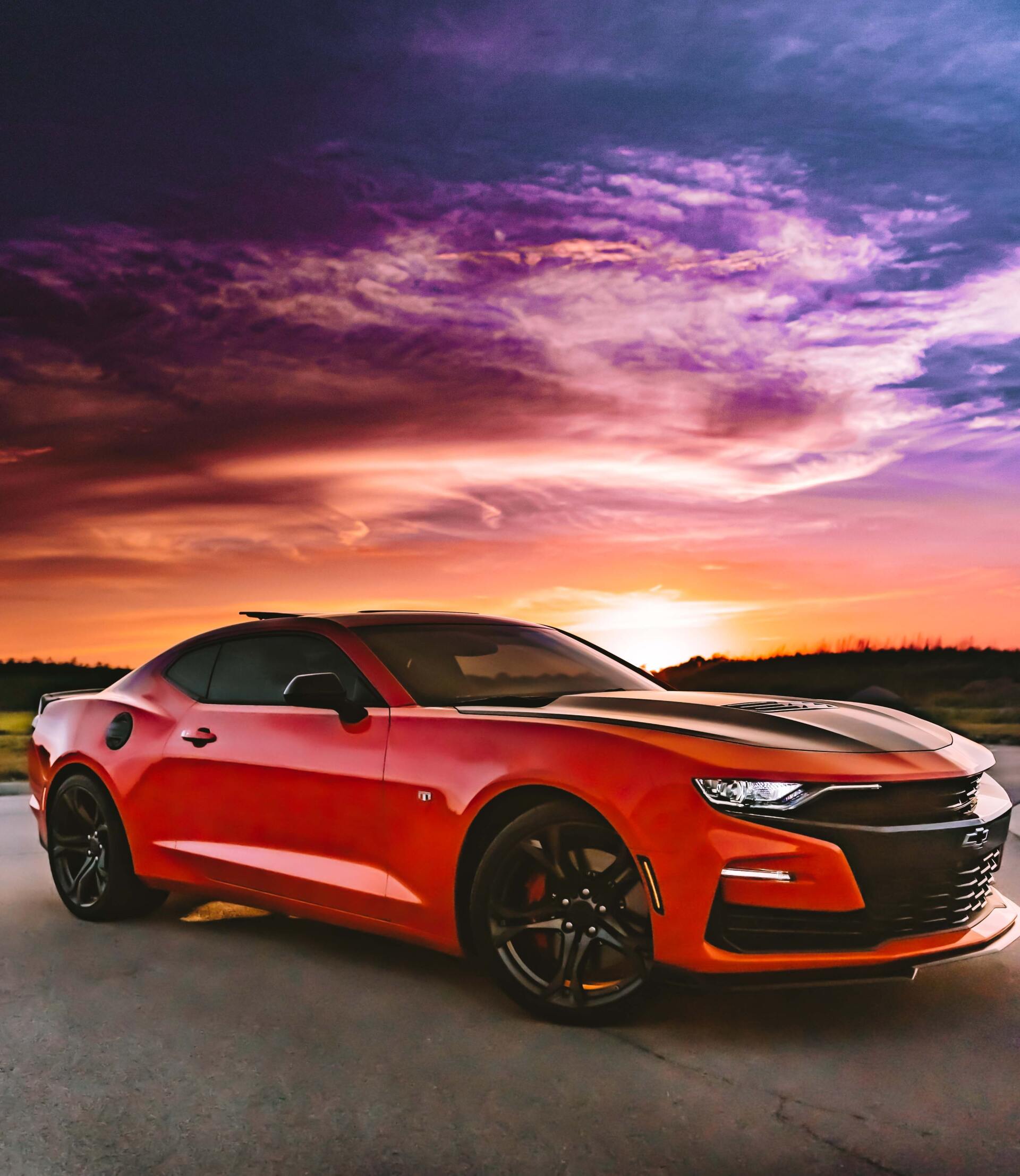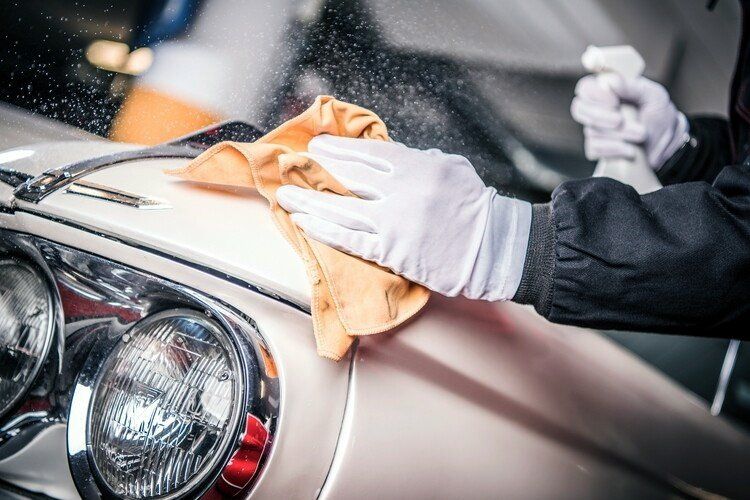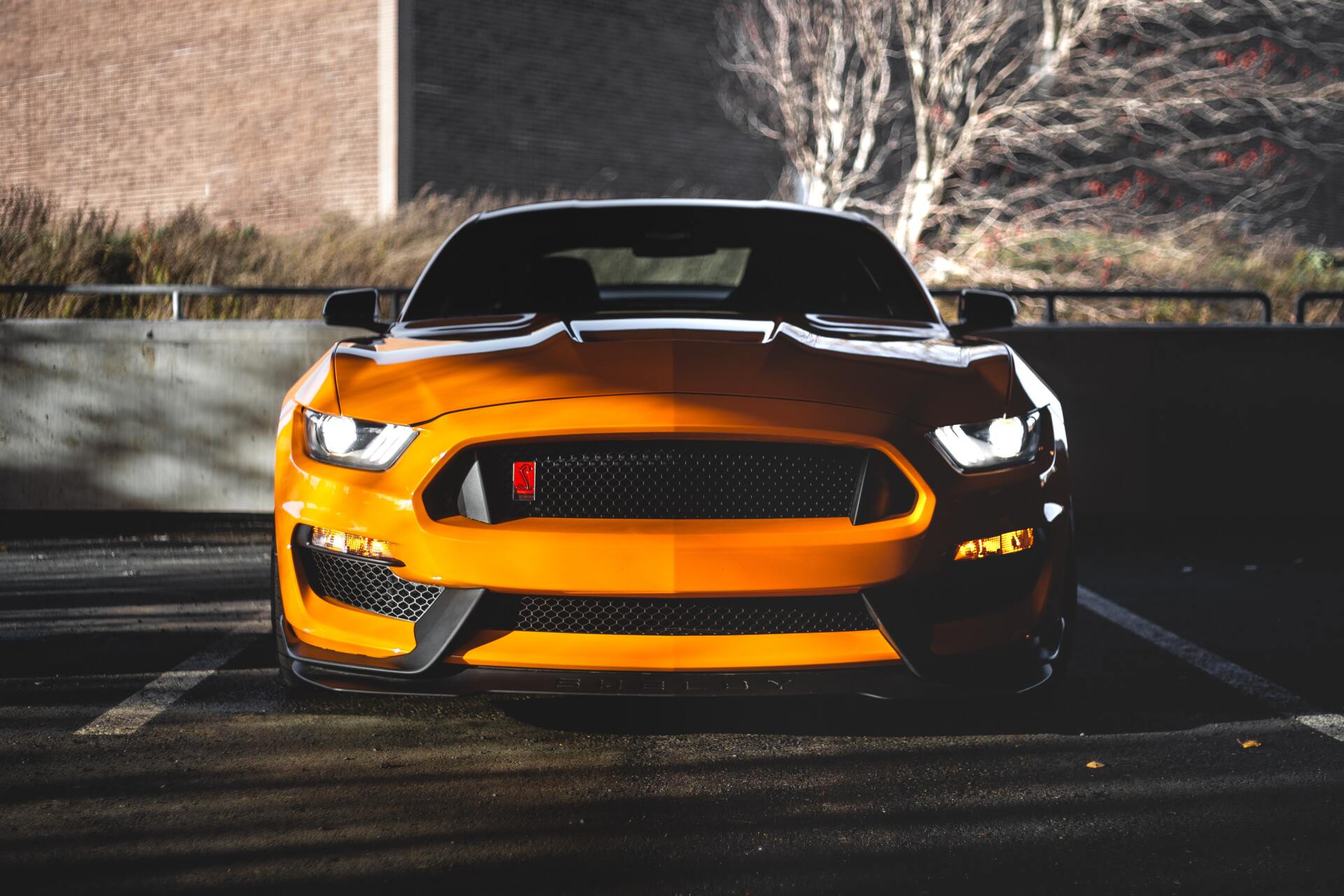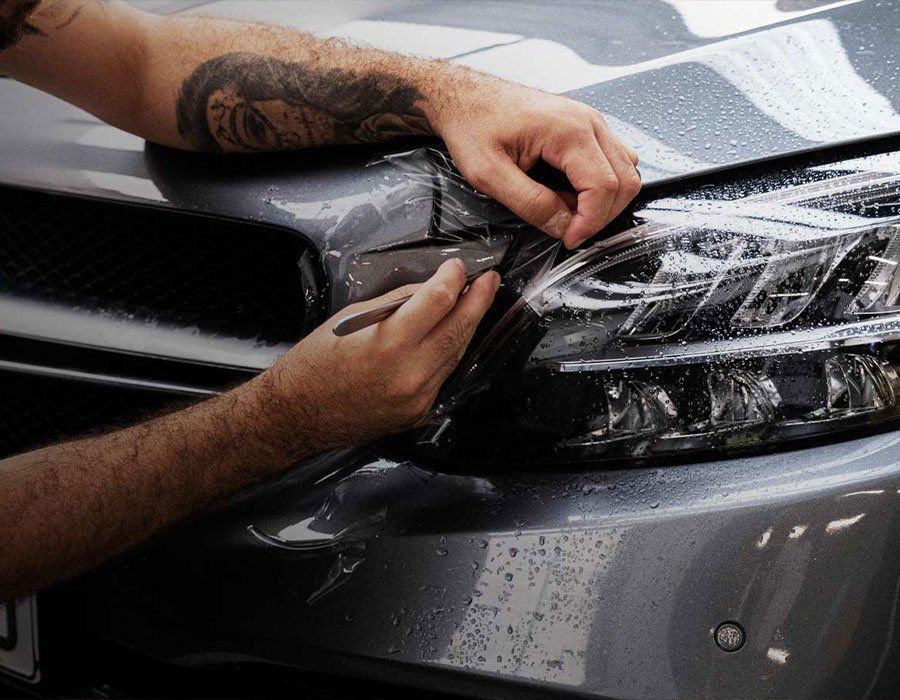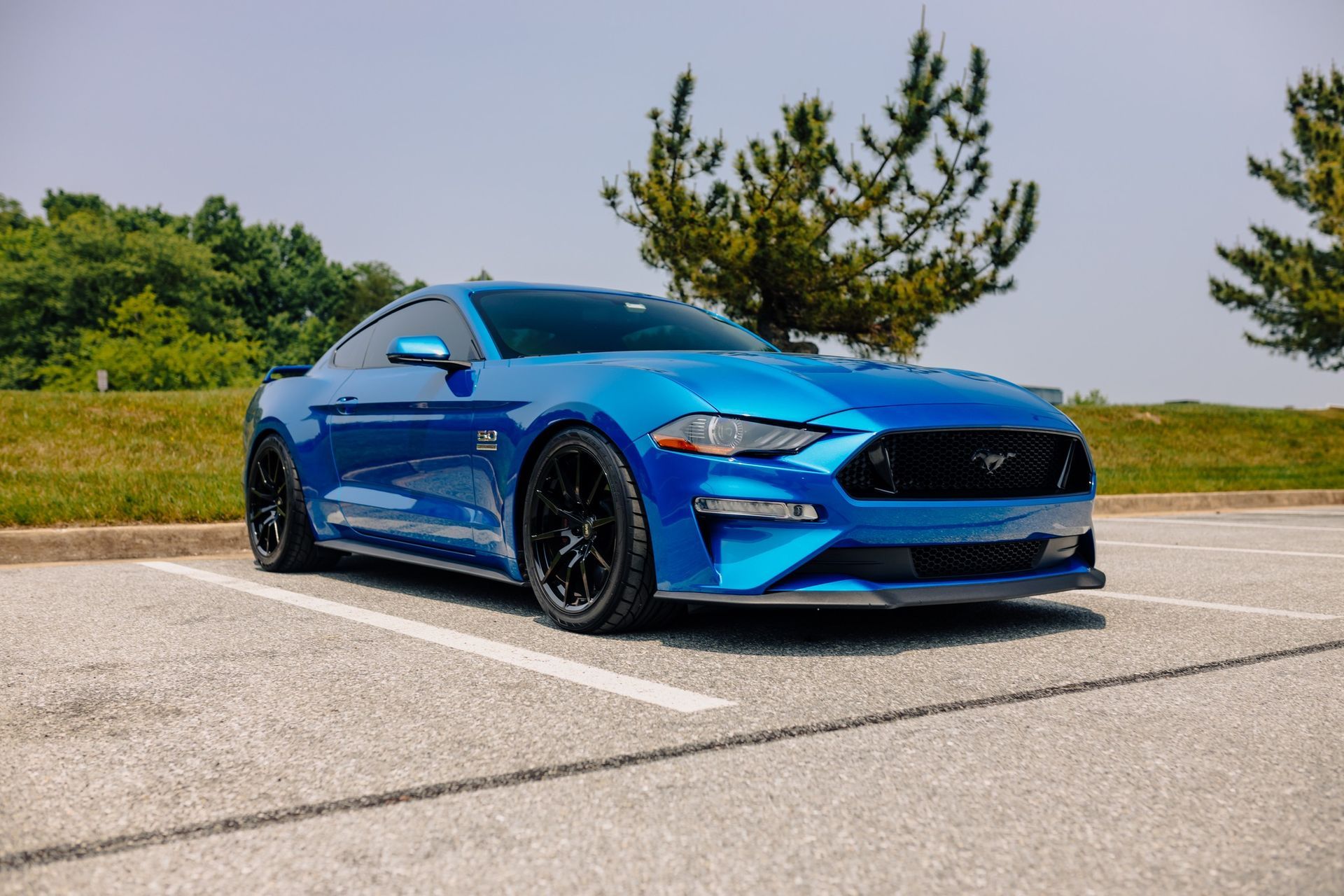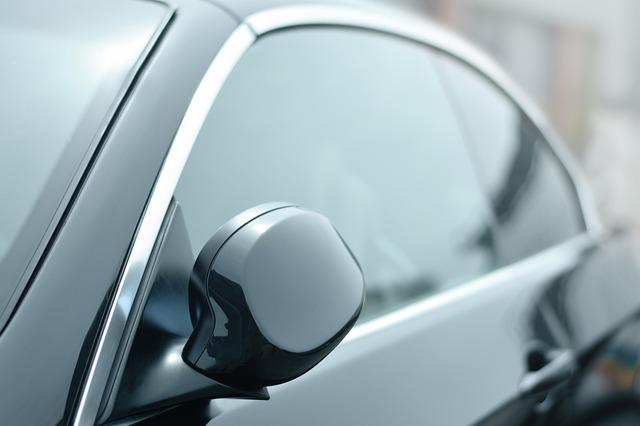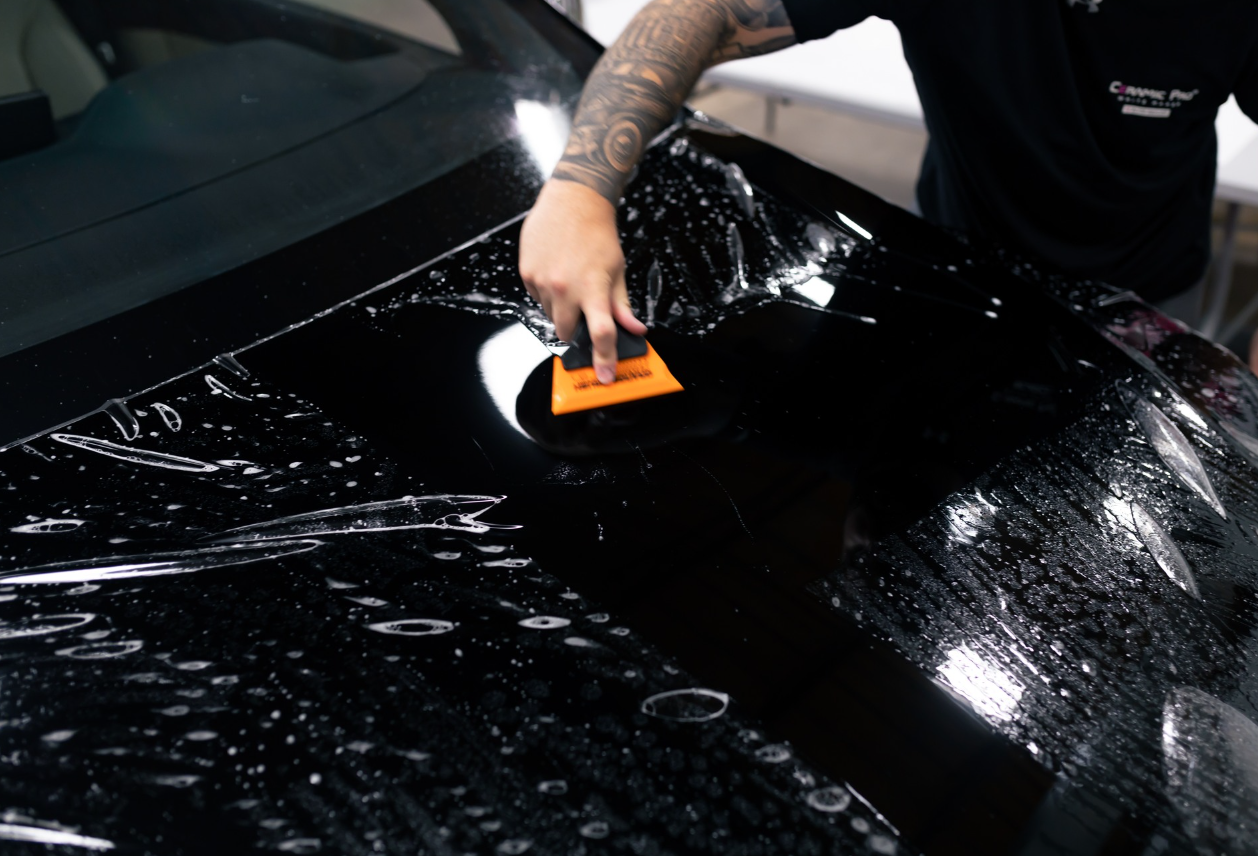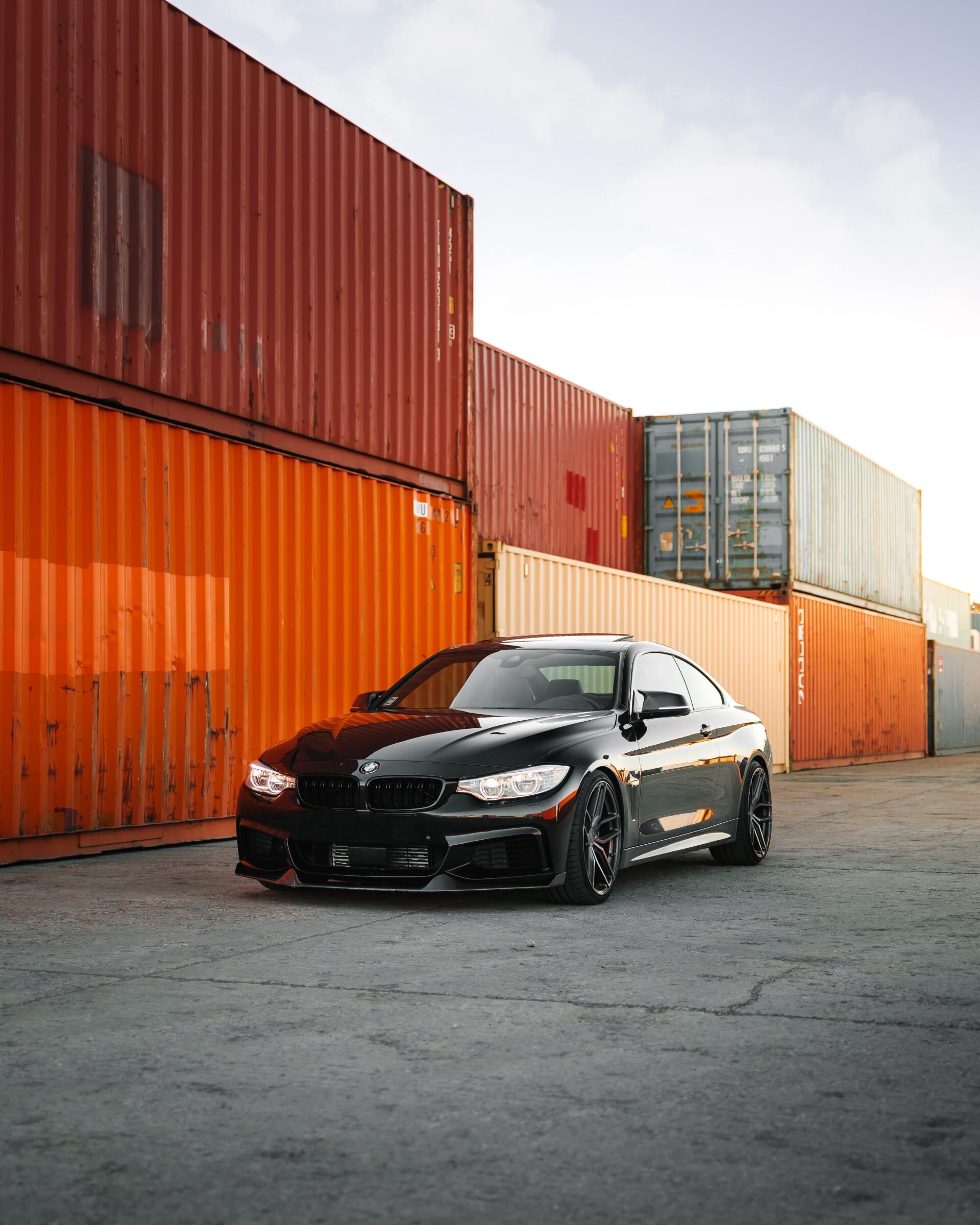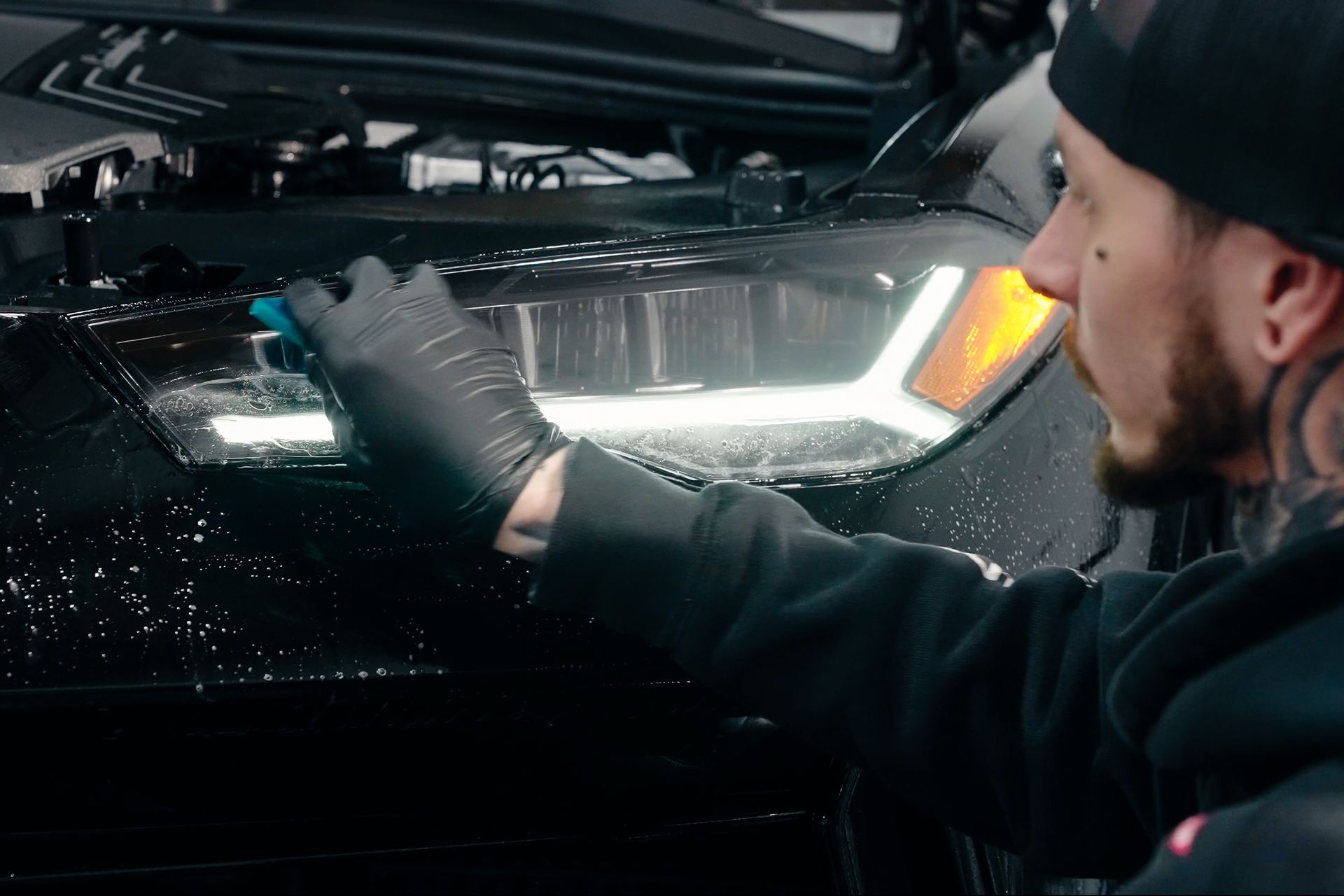Paint Protection Film vs. Ceramic Coating: Which Is Right for You?
A car's worst nightmare can be a sleetstorm, dense hail, or even the scorching sun. This begs the question for every car owner, whether in Bel Air, Maryland, or anywhere else in the world: how can you protect your beloved vehicle from such harsh realities? Recognizing the similarities between these challenges, two options, paint protection film (PPF) and ceramic coating, have emerged as frontrunners in providing this semblance of protection.
Both claim to protect your car's exterior from harsh environmental hazards, ensuring it retains its aesthetic appeal for years to come by using different types of paint protection films.
But which is the superior method?
We're diving deep into the world of PPF and ceramic coatings to unravel their secrets and help you make an informed decision.
Both PPF and ceramic coating, both important components of the auto protection industry, provide excellent paint protection, but they work in different ways.
Paint protection film is a clear film with self-healing properties that provides superior protection against rock chips, scratches, and hard water spots.
Ceramic coating, on the other hand, bonds to the car's paint to create a hydrophobic surface that repels water and contaminants. It provides additional protection against UV exposure, chemical stains, and minor abrasions.
Ultimately, the best solution might be to combine both options by applying
paint protection film to vulnerable areas like the front bumper, hood, and fenders, then adding a
ceramic coating layer over the top of the whole car for enhanced gloss and additional protection from environmental factors.
Paint Protection Film: The Ultimate Bodyguard?
When it comes to protecting your vehicle's paint from the perils of everyday life, particularly in a climate like Bel Air's in Maryland, there's one solution that has gained a reputation as the ultimate bodyguard: the paint protection film (PPF).
This innovative film, also known as "clear bra" or "clear paint film," is a thermoplastic polyurethane layer that acts as armor against stones, minor scratches, tar marks, and debris.
Unlike ceramic coatings, which bond to the vehicle's surface, PPF acts as a physical barrier, absorbing impacts and preventing damage to the underlying paint.
Consider driving down a gravel road, looking forward to your weekend adventure. As you drive through the terrain, gravel chips aim for your vehicle's front end.
Without paint protection film installed, those chips could create unsightly paint chips or scratches that not only mar the appearance but can also lower the resale value of your car.
However, with PPF in place, these hazards bounce right off the film, preserving its original beauty and maintaining a high standard of the vehicle's exterior, and this is a part of its appeal to car owners in Bel Air and beyond.
It not only protects against physical damage, but it also provides several other advantages. The first is its near-invisibility once applied. High-quality PPF is virtually undetectable to the naked eye, allowing your vehicle's original paint color and shine to remain unaffected.
Additionally, some films are self-healing, meaning that minor scratches caused by light brushes or swirling marks can disappear over time as the film magically repairs itself.
Imagine parking your car in front of a busy grocery store on a busy shopping day. As you return to your vehicle, you notice a faint scratch on the driver's side door from where another car carelessly brushed against yours in their recklessness.
Your heart sinks momentarily until you realize that as the ambient temperature rises with sunlight exposure, paint protection film will work its magic and erase that scratch entirely before you even have to consider a costly repair.
This is one of the similarities between PPF and ceramic coatings in their protective capabilities. Another advantage is its longevity and durability.
The film is designed to withstand harsh weather conditions, UV radiation, bird droppings, and other environmental elements that can quickly damage unprotected paint.
This difference gives paint protection film an edge for preservation purposes. With warranties ranging from 5 to 10 years, quality PPF offers long-lasting protection and peace of mind and underlines the importance of investing in professional service for installation.
However, it has drawbacks, as do all car protection methods. For starters, it is significantly more expensive than ceramic coatings.
Depending on the size and complexity of the vehicle, a full PPF job could easily cost several thousand dollars. Following extensive research, this high price point may deter some people from pursuing this level of protection.
Furthermore, PPF installation requires professional expertise to ensure a seamless and bubble-free finish.
Improper or low-quality installation can result in adhesive residue and even paint damage when the film is removed.
It's vital to find an experienced installer who uses high-quality materials to avoid these potential complications, underscoring the significance of a premium service.
In terms of maintenance, it does require regular care to maximize its effectiveness. Dirt, chemicals, and debris left on the surface for extended periods can compromise the film's protective qualities and potentially damage the paint underneath.
Cleaning the film using non-abrasive products and techniques recommended by the manufacturer is essential for maintaining its longevity.
While PPF offers unparalleled physical protection against a wide range of hazards while preserving your car's appearance and value, it's important to weigh these benefits against its higher cost and the need for professional installation and ongoing maintenance.
Next, we will look at the differences between
ceramic coatings and
paint protection films.
Understanding the Benefits and Drawbacks
When it comes to protecting the exterior of your beloved car, ceramic coating has emerged as a true game changer in recent years. This innovative technology provides an additional layer of protection beyond what traditional methods such as wax or sealants can provide.
Ceramic coatings are made up of nanoparticles that bond with the paint surface to form a permanent protective layer that improves the look and durability of your vehicle.
- Paint protection film can typically last between 5 and 7 years under normal usage, while a ceramic coating can last up to 3 years with good maintenance.
- According to an Auto Trader study, vehicles with PPF or ceramic coatings have a higher resale value than those without either of these protections.
- According to the American Car Wash Association, cars with PPF or ceramic coatings require less frequent washing, allowing for up to a 50% savings on car wash expenses over their lifetime.
Ceramic Coating: A Game Changer?
The benefits of ceramic coatings are undeniable. For starters, it is extremely durable, with some coatings lasting up to 3 or 4 years.
This means you can enjoy long-lasting protection without the need for a frequent paint job or worrying about constantly reapplying other types of products like wax. Your car will turn heads wherever you go thanks to the high gloss finish that ceramic coating achieves.
It not only improves the aesthetic appeal, but it also increases the value of your investment.
But the real power behind ceramic coating lies in its ability to shield your car from various environmental contaminants and damage.
The hydrophobic properties of ceramic coatings make it difficult for dirt, snow, chemicals, and water spots to adhere to the surface.
Research evidences the difference it makes in maintaining your car's appearance and resale value over the long run.
The overall purpose of meticulously attending to your car's cleanliness is to enhance your driving experience, and the traditional method of car waxing often leaves unsightly swirl marks.
With a ceramic coating applied, there is less time spent cleaning your car and more time spent enjoying its immaculate appearance.
Furthermore, these coatings are highly resistant to scratches, UV rays, oxidation, and chemical damage caused by bird droppings, swirl marks, or tree sap. It also includes resistance against road hazards that can hamper your driving experience.
It's important to note that while ceramic coatings provide impressive protection, they are not entirely impenetrable. It won't prevent rock chips or large impacts that can cause significant damage to the paintwork, which are common road hazards.
Additionally, although it provides some level of self-cleaning properties due to its hydrophobic nature, regular maintenance is still required to ensure optimal performance. This includes periodic washing to remove dirt and debris that may accumulate on the surface.
Imagine the pleasure of driving through a dusty road or encountering a sudden rainfall. With a ceramic coating, your car would remain relatively clean and protected against the elements.
The water would simply bead up and slide off the surface, leaving behind a spotless finish that requires minimal effort to maintain.
Now that we've explored the benefits of ceramic coating, let's delve deeper into its advantages and limitations.
Unlocking Its Advantages and Limitations
One of the main advantages is the long-lasting protection it provides. Ceramic coatings have revolutionized car care by offering a durable solution that can withstand harsh environmental conditions and daily wear and tear.
No more worrying about UV rays fading your paintwork or exposure to the elements. With a ceramic coating, you can enjoy peace of mind knowing that your car's exterior is well protected for an extended period of time.
Another advantage is the improved appearance that the ceramic coating gives your vehicle. The high gloss finish gives the paintwork depth, making the colors appear richer and more vibrant.
It truly gives your car a showroom-worthy shine that draws attention wherever you go.
However, it's important to consider some limitations as well. While they offer great protection, they can be quite expensive compared to traditional methods like wax or sealants.
Additionally, the application process is not as simple as spraying or wiping on a product; it often requires careful preparation and multiple layers to achieve optimal results.
Therefore, professional installation might be necessary for achieving the best outcome.
Moreover,
ceramic coatings are not immune to damage, particularly if subjected to improper maintenance or care. They can be prone to water spots if not properly dried after washing or exposed to harsh chemicals.
You Might Like to Read: Factors to Consider When Choosing the Right Paint Protection Film
Paint Protection Film Vs Ceramic Coating: A Comparison
Paint protection film, as the name suggests, is a transparent film that is applied to the surface of your car's paintwork. It serves as a physical barrier to prevent dings, chips, and other types of damage from gravel, road debris, or minor accidents.
This film is typically made from polyurethane material and varies in thickness.
Thicker films are more impact-resistant, but they may be more expensive. Different types of PPF also include extra features such as self-healing capabilities or pre-cut kits for easier installation.
One of its best features, however, is its ability to provide clear paint protection, protecting against UV damage as well as other external forces.
Ceramic coating, on the other hand, is a liquid polymer that chemically bonds with the paint surface to create a protective layer. This layer provides enhanced protection against
UV rays, oxidation, fading, and chemical contaminants like bird droppings or tree sap, making it a formidable shield against UV damage.
They can offer high levels of gloss and hydrophobic properties, making water bead off easily and reducing the adhesion of dirt and grime.
However, it's important to note that ceramic coatings do not provide the same level of impact resistance as PPF, nor do they offer clear paint protection.
Now let's compare these two options across various aspects:
1. Protection Level: When it comes to sheer impact resistance and physical damage protection, paint protection film is unrivaled. Because it is thicker, it is more resistant to chips, scratches, and other minor abrasions.
Ceramic coating, on the other hand, excels in chemical resistance and protection against environmental factors such as UV rays and oxidation.
2. Durability: PPF typically outlasts ceramic coatings in terms of durability and lifespan. Paint protection film is resistant to daily wear and tear, including washing and exposure to harsh weather conditions, as well as UV damage.
Ceramic coatings, while long-lasting, degrade gradually over time and may need to be reapplied.
3. Maintenance: Both options require maintenance, but the ceramic coating might demand more attention. Regular washing and occasional detailing are necessary to keep the coating's performance intact.
PPF is generally easier to maintain as it can be treated like the rest of the car's paintwork, despite offering clear paint protection.
4. Cost: When comparing costs, several factors come into play. PPF tends to have a higher initial cost due to the materials involved, professional installation, and extended durability.
Ceramic coating, on the other hand, has a lower initial cost but requires periodic reapplication, which adds up over time.
5. Resale Value: Both PPF and ceramic coatings can enhance your car's resale value. A well-maintained protective layer can contribute to preserving the paintwork's quality and appearance over the long run.
Now that we have compared these two protection methods, let us take a closer look at an important factor: the cost and durability of
paint protection film versus
ceramic coating.
Weighing Up Cost and Durability
Cost and durability are crucial factors when deciding between paint protection film (PPF) and ceramic coating for your car. The price of both options depends on various factors that need to be considered for an informed decision.
When it comes to PPF, cost considerations include material quality and brand reputation. Reputable brands with advanced features, durability, and warranty coverage tend to be more expensive.
Paint protection film also offers invaluable clear paint protection against UV damage, a rare feature that is often worth the slightly higher price.
The size and coverage area of the vehicle also have an impact on the price; applying PPF to only a few key high-risk areas will be more expensive. It comes in a variety of price points; films with self-healing properties or pre-cut kits are typically more expensive.
Professional installation is recommended for optimal results, and the cost can vary based on the size of the vehicle and the complexity of the installation. Some brands offer warranties that cover issues like yellowing, cracking, peeling, or fading.
As for ceramic coating, costs involve preparatory work such as washing, decontamination, and paint correction, which may vary.
The brand and product quality play a significant role in determining the price. Established brands with high-quality coatings often have a higher price point.
The complexity of the application process and the number of layers required can also influence the cost. Specialized equipment or techniques may contribute to higher expenses.
A professional application is recommended for an even application and optimal results.
The size of the vehicle and the detailer's pricing policy will determine the cost. Ceramic coatings must be maintained on a regular basis and have a limited lifespan of one to five years. Reapplication incurs additional costs.
When comparing costs between PPF and ceramic coating, it's essential to consider long-term benefits, the level of protection offered, durability, lifespan, resale value impact,
maintenance costs, and potential repair costs for both options.
While paint protection film offers thicker and more impact-resistant protection at a higher initial cost, it lasts longer and reduces the need for frequent reapplication. It also allows for targeted repairs in specific areas without affecting the entire coating.
Ceramic coatings, on the other hand, provide a more durable and long-lasting layer but require more maintenance and, eventually, reapplication.
Finally, your budget, priorities, and desired level of protection should guide your decision. Consulting experts in the field and researching reputable brands can assist you in making an informed decision that best meets your individual needs.
A Combined Defense: Uniting PPF and Ceramic Coating
When it comes to protecting your car's paint from the harsh elements of daily driving, a combination of paint protection film and ceramic coating offers an unmatched level of defense.
By combining these two methods, you can create a shield that provides both physical and chemical protection, ensuring your car maintains its pristine appearance for years to come.
PPF, also known as clear bra, is a transparent polyurethane film that is applied to your vehicle's surface. It acts as a sacrificial barrier, protecting the paintwork from road debris, scratches, and minor impacts.
The film's self-healing properties allow it to absorb and disperse these threats without leaving any permanent marks on the film itself. Furthermore, PPF is highly resistant to UV rays, preventing fading and oxidation caused by prolonged sun exposure.
On the other hand, a ceramic coating is a liquid polymer that is applied to the exterior surfaces of the car. Once cured, it forms a semi-permanent bond with the paintwork, creating a protective layer that is resistant to chemicals, UV rays, and oxidation.
It offers several advantages, such as enhanced hydrophobicity, which makes water bead up and roll off the surface, reducing water spots and making maintenance easier.
They also provide a high level of gloss and depth to the paintwork, giving your car that coveted showroom shine.
Consider PPF to be the armor that protects your car's paint from direct physical damage and rainwater, whereas ceramic coating acts as a shield against chemical wear and environmental factors.
The combination of both creates a comprehensive defense system for your car's paint, much like how knights in medieval times would combine different armor pieces for complete protection on the battlefield.
To put it another way, imagine you are wearing a high-quality raincoat while also carrying an umbrella on a rainy day. The raincoat shields you from direct contact with rainwater, while the umbrella offers additional protection from water coming in at different angles.
The same principle applies to combining PPF and ceramic coating for your car, providing multiple layers of defense against various sources of damage.
Finally, by combining the power of paint protection film and ceramic coating, you create a formidable defense for the paintwork on your car.
While PPF primarily protects against physical threats, such as scratches and road debris, ceramic coating adds an extra layer of chemical resistance and enhances the visual appeal of your vehicle.
By taking this comprehensive approach to car protection, you can have peace of mind knowing that your investment is safe from harm.
Ensure Long-Lasting Protection With PPF & Ceramic Coating Application in Bel Air, Maryland
Your choice depends on priorities; opt for paint protection film if safeguarding against dings is paramount, or choose ceramic coating for comprehensive, low-maintenance protection and enhanced aesthetics. Consulting a professional can help align your choice with your specific vehicle needs.
Experience automotive excellence and elevate your car's aesthetics and durability with
Detail Solutions
top-notch
paint protection film and
ceramic coating installation services in Bel Air, Maryland.
You can rely on us to preserve the beauty and value of your vehicle.
In addition, our professional detailers will use precision techniques to ensure long-term protection from environmental hazards while maintaining a stunning, showroom-worthy finish.
Drive with confidence, knowing your investment is protected in style.
Give us a call today for more information and to schedule your appointment!
Locally owned and operated since 2011, Detail Solutions specializes in interior and exterior vehicle detailing, ceramic coatings, and paint protection film in the Baltimore area.
We also offer special pricing for Tesla owners along with free charging while being serviced on a Level 2 Tesla charger. Contact us today to inquire about any of our services including, wheel off cleaning, headlight restoration, vinyl wraps, chrome delete or a new vehicle service. So get in touch with us today to schedule a FREE estimate.
QUICK LINKS
OUR LOCATION
8967 Yellow Brick Rd, Rosedale, MD, United States
CONTACT US
SERVICE AREAS
BaltimoreDetail.com was designed by the team at Detailers Roadmap, a platform developed for detailing operators across the globe.
All Rights Reserved | 8bitcreative, LLC | Detail Solutions


